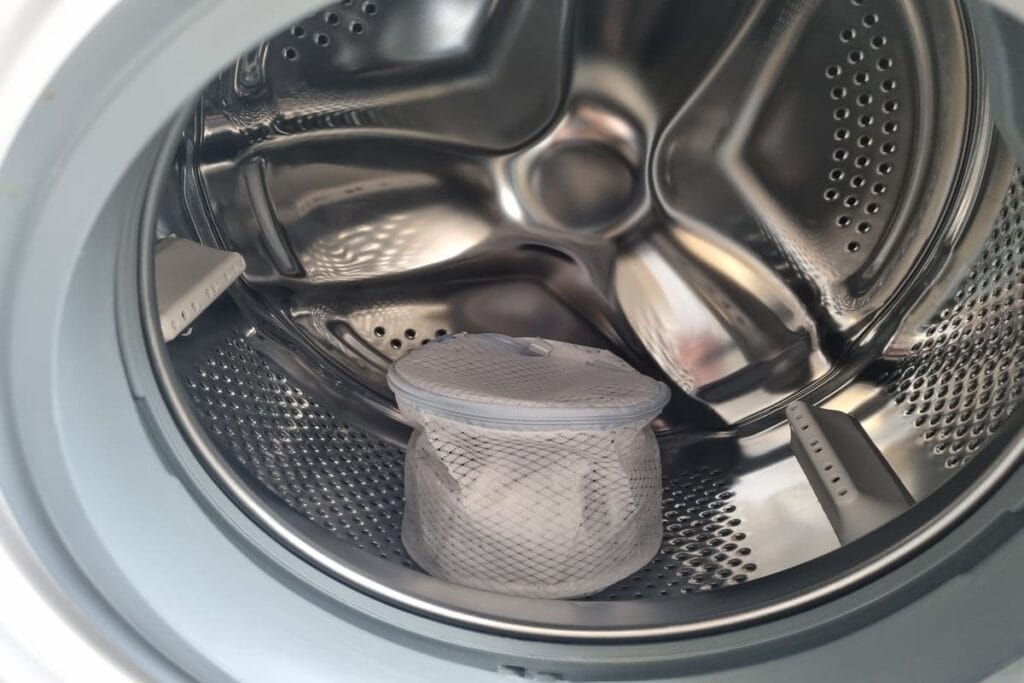How Long Can Silk Sit in Water: Essential Durability Guide
As a lover of luxurious silk fabrics, I know the panic that sets in when your favorite silk blouse or dress gets unexpectedly splashed or soaked.
Silk’s delicate beauty comes with the need for careful handling, especially around water, including washing silk.
But have no fear! In this comprehensive guide, I’ll explore everything you need to know about silk’s interaction with water.
You’ll learn silk’s durability limits, safety tips, and how to revive silk after water exposure. Let’s dive in!

Immediate Effects of Water on Silk
What exactly happens when water first comes into contact with silk fabric? Here are the initial reactions to expect:
- Silk repels water at first. The smooth surface causes water to bead up rather than soak in immediately. This gives you some time to blot away moisture before it damages the silk.
- With prolonged contact, water will penetrate the silk fibers. Silk is hygroscopic, meaning it can absorb moisture but at a slower rate compared to other fabrics.
- Wet silk becomes weaker and more prone to rips or tears when handling the fabric.
- Water can leave permanent stains, discoloration, or tide marks on silk if not promptly removed. Rust, food dyes, and other water-based stains can set over time.
- Silk loses its shape and structure when wet, becoming stretched out or misshapen as the water weight pulls down the fabric.
The takeaway? While silk does initially resist water, prolonged moisture exposure creates definite risks you’ll want to avoid. Next, let’s look at how long silk can safely sit in water.
This article explains everything you need to know about how silk reacts with water.

Duration of Silk in Water Without Damage
Many sources claim silk is easily damaged or ruined by water. But how much time does silk actually have before the effects set in? Here are the general time limits to keep in mind:
| Time Exposed to Water | Silk Care Instructions |
| Up to 5 minutes | Silk can repel small splashes or drops for a brief time. Blot gently with a towel to remove excess moisture. |
| 10 minutes | Silk will start absorbing water around this timeframe. Gently squeeze out water and reshape the fabric. |
| 15-30 minutes | There’s a risk of water stains and slight discoloration, but significant loss of shape is less likely. Rinse and dry flat as soon as possible. |
| 1 hour | Severe shrinking, dye transfer, and permanent water marks will occur. Silk is extremely vulnerable when wet this long. |
| Overnight | Immersing silk this long will likely result in irreparable damage. The fabric can permanently felt, shred, bleed color, and grow mildew. |
The condition of the silk also impacts its water tolerance. Worn, washed, or delicate silks have less resistance.
Silks with sizing compounds or finishes can withstand slightly longer water exposure. When in doubt, err on the side of caution.

Soaking Silk: Guidelines and Timeframes
While you’ll want to avoid unnecessary water contact, there are times when intentionally soaking your silk is needed for cleaning or restoration purposes.
Here are smart guidelines to follow:
- Check the silk’s fiber content. Natural silk fibers are more prone to water damage than synthetic silk blends.
- Use cool or lukewarm water, never hot. Heat can shrink and damage silk rapidly.
- Limit soaking time from 1-15 minutes max. Use a timer to avoid oversoaking.
- Gently swish and press; never wring, twist, scrub, or agitate silk vigorously.
- Support heavy silk garments and lift gently from water by the edges to avoid stretching.
- Roll in a towel to press out excess moisture. Hang or lay flat right away.
- Iron while still slightly damp on medium heat with steam to realign fibers.






For vinegar soaks, follow similar guidelines:
- Dilute distilled white vinegar with three parts of cool water.
- Soak 2 minutes for stain removal, 5 minutes max for deodorizing. Rinse well after.
- Test colored silk first for potential dye bleeding.

Following these instructions will let you soak silk safely as needed for cleaning and care.
Silk Strength and Water Interaction
Does wet silk become permanently weakened over time? The effect of water on silk strength is controversial. Here’s what research and experts reveal:
- When soaked, silk can lose up to 20% of its strength due to the relaxing of fiber structure.
- Silk regains nearly all strength when fully dried. However, repeat soakings compound fiber damage.
- Water exposure doesn’t lead to silk self-destructing. But weakened areas are prone to future tearing or shredding.
- Heat damage during drying or ironing poses a bigger threat to silk strength than the soaking itself.
While wet silk is clearly more fragile, the notion that water permanently destroys silk is overstated. With proper care, silk retains its coveted strength and resilience.
Different Silk Types and Water Duration Exposure
Not all silks are created equal when it comes to water resistance. Here’s how various silk types compare:
| Type of Silk | Water Resistance Characteristics |
| Mulberry silk | Moderate water resistance. Can withstand light moisture for 5-10 minutes. |
| Tussah silk | More textured surface resists penetration. Tolerates water up to 15 minutes. |
| Silk chiffon | Very delicate weave absorbs water quickly. Limit to 1-5 minutes max. |
| Silk satin | Tighter weave helps repel water longer. Allows 10-15 minutes before damage. |
| Silk charmeuse | Absorbs moisture faster than other silks. Keep water contact under 5 minutes. |
| Silk velvet | Dense pile attracts and retains moisture. Requires immediate blotting. |
| Silk blends | Synthetic content adds water resistance. Allows longer exposure times. |
The takeaway? Densely woven, textured, or blended silks have the highest water durability. Sheer and sleek silks require swift action to avoid permanent damage when wet.

Silk in Cold Water: Shrinking and Precautions
Does water temperature affect how silk handles immersion? Frigid water brings added risks. Here’s what to know:
- Cold water shrinks silk fibers more drastically than lukewarm or cool water.
- Sleek silks like charmeuse become up to 1-2 sizes smaller after cold water soaking.
- To prevent shrinking, only soak or hand wash silk in cool 60-70°F (15-21°C) water temperatures.
- For machine washing, use a delicate cycle with cold water option. Air dry silks to prevent heat shrinking.
- If silk does shrink, stretch it back to size while damp, then block it flat to dry.
The chilling truth is that cold water’s effect on silk is anything but refreshing. Help silks keep their shape by avoiding icy temps during soaking and washing.
Practical Tips for Handling Wet Silk
Accidents happen, and you may someday face the unfortunate event of silk getting drenched. Here are my tried and true techniques for handling soaked silk:
- Stay calm! Avoid panic tugging or wringing which can damage silk. Gently lift and support the silk.
- Blot excess moisture immediately with towels or paper towels. Roll fabric in a towel to draw out water rather than squeezing.
- For minor dampness, use a hair dryer on a cool setting to speed drying. Keep it moving to avoid heat damage.
- Reshape garments gently while still damp, smoothing seams and realigning hems or collars.
- Lay flat on top of towels or a mesh garment rack. Reshape periodically as it dries.
- Once fully dry, steam briefly to relax fibers. If needed, iron on low heat with a silk press cloth.
With quick action and gentle handling, you can revive soaked silk back to its beautiful state. Follow these steps and avoid panic for positive results.
Can I Wash My Silk Clothes in the Washing Machine?
Use caution when machine washing silk. Select a gentle cycle with cool water and a mild detergent. Use a mesh bag for delicate items to prevent tearing.
Fully air dry silks away from direct heat. With the right settings, machine washing can be safe for some silks but always check garment labels first.
Discover the best practices in my article about whether you’re supposed to wash silk.



Why Does My Silk Change Texture or Get Stiff When Wet?
The moisture causes the proteins in silk fibers to relax and lose structure. This allows the long silk molecules to bond together into a more rigid state as the fabric dries.
Proper drying and steaming can help silk regain its softness. Avoid wringing silk when wet, as this compounds the stiffening effect.
Is It Okay to Wear or Store Damp Silk?
Avoid wearing or storing silk while still damp or it may develop permanent water stains, mildew, or misshapen areas.
The excess moisture gets trapped within the fibers and causes damage over time.
Thoroughly dry damp silk as soon as possible by blotting, air drying flat, and steaming or ironing on a low heat setting if needed.
Conclusions
I hope this thorough guide has shed light on silk’s complex relationship with water.
While too much moisture can lead to permanent damage, short-term contact is not necessarily the end for treasured silk items with proper care.
Arm yourself with knowledge of silk’s durability limits, specialized cleaning methods, and damage prevention.
Understanding water’s effects puts you in control of keeping silk’s elegant appearance and enviable strength intact for years of enjoyment.
With my guidance, you can handle wet silk scenarios with confidence and revive your silk to continue cherishing its singular beauty.
